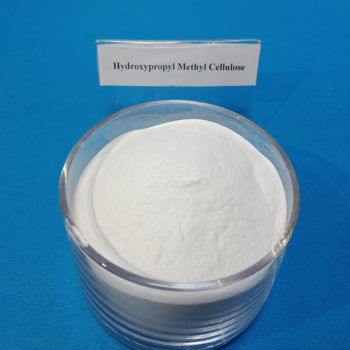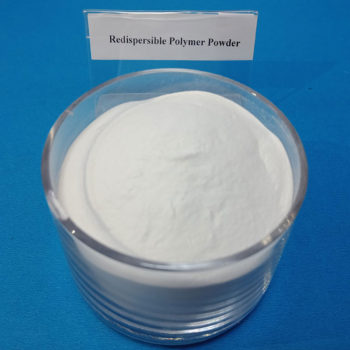China cellulose ether manufacturer
China HPMC factory,have a daily output 150 tons,our products including Hydroxypropyl Methyl Cellulose (HPMC), Redispersible Polymer Powder (RDP) ,which can be widely used in building materials such as dry mix mortar, gypsum based plaster, wall putty, tile adhesive, cement mortar, EIFS, detergent and so on.


the details of Hydroxy Propyl Methyl Cellulose (HPMC)
Hydroxy Propyl Methyl Cellulose (HPMC): Composition, Properties, and Applications
Introduction
Hydroxy Propyl Methyl Cellulose (HPMC), also known as hypromellose, is a versatile polymer that finds extensive use in various industries, including pharmaceuticals, construction, food, and cosmetics. This compound is derived from cellulose and is modified to possess unique properties, making it valuable in a wide range of applications. In this article, we will delve into the details of HPMC, including its composition, properties, and applications.
Composition
HPMC is a synthetic compound derived from cellulose, a natural polymer found in the cell walls of plants. The manufacturing process involves treating cellulose with a combination of propylene oxide and methyl chloride, leading to the introduction of hydroxypropyl and methoxy groups onto the cellulose backbone. The degree of substitution (DS) of both hydroxypropyl and methoxy groups can vary, resulting in different grades of HPMC with distinct properties. The typical chemical structure of HPMC is as follows:
Properties
-
Solubility: HPMC is soluble in both hot and cold water, depending on its grade and DS. Higher DS grades dissolve more readily in cold water, while lower DS grades require higher temperatures for dissolution.
-
Film-Forming: HPMC can form clear and flexible films when cast from a solution, making it useful in pharmaceutical coatings, food packaging, and cosmetics.
-
Viscosity: One of the key properties of HPMC is its ability to modify the viscosity of solutions. This property is extensively utilized in various industries, such as construction (for mortar and tile adhesives) and pharmaceuticals (for controlled-release drug formulations).
-
Thermal Stability: HPMC exhibits good thermal stability, which allows it to be used in high-temperature processes without significant degradation.
-
Chemical Stability: It is chemically stable under normal conditions, making it compatible with a wide range of other ingredients and materials.
-
Hydrophilicity: HPMC is highly hydrophilic, which makes it suitable for use in oral pharmaceutical formulations, where it can help improve drug dissolution and bioavailability.
Applications
-
Pharmaceuticals: HPMC is widely used as an excipient in pharmaceutical formulations. It is employed in tablet coatings, controlled-release drug delivery systems, ophthalmic solutions, and oral suspensions.
-
Construction: HPMC is added to cement-based products, including mortars, grouts, and tile adhesives, to enhance workability, water retention, and overall performance.
-
Food Industry: In the food industry, HPMC is utilized as a thickening agent, stabilizer, and emulsifier. It can be found in products like sauces, salad dressings, and ice creams.
-
Cosmetics: HPMC is used in cosmetics and personal care products such as creams, lotions, and shampoos as a thickening and stabilizing agent.
-
Paints and Coatings: HPMC is added to paints and coatings to control viscosity, improve pigment suspension, and enhance the overall performance of these products.
-
Ophthalmology: In ophthalmic preparations, HPMC is used to increase the viscosity of eye drops, providing longer contact time with the eye's surface.
In conclusion, Hydroxy Propyl Methyl Cellulose (HPMC) is a versatile polymer with a wide range of applications across multiple industries due to its unique properties. Its ability to modify viscosity, form films, and enhance stability makes it an essential ingredient in various products, from pharmaceuticals to construction materials and beyond. Understanding the composition and properties of HPMC is crucial for harnessing its full potential in diverse applications.
Introducing HPMC in Building Materials
Hydroxy Propyl Methyl Cellulose (HPMC) plays a significant role in the construction and building materials industry due to its versatile properties. Its incorporation into various building materials enhances their performance and workability. Here, we'll explore how HPMC is introduced and utilized in the context of building materials:
1. Mortars and Grouts:
-
Workability: HPMC is added to mortar and grout formulations to improve workability. It acts as a water retention agent, preventing rapid water loss during application, which allows for easier troweling and better adhesion.
-
Enhanced Adhesion: HPMC improves the adhesion properties of mortars and grouts, ensuring a stronger bond between tiles, bricks, or stones and the substrate.
-
Anti-Sag Properties: It prevents sagging or slumping of vertical applications like wall tile adhesives, ensuring tiles remain securely in place during installation.
-
Reduced Cracking: HPMC can help reduce the incidence of cracks in mortars and grouts, enhancing the long-term durability of construction materials.
2. Cement-Based Renders and Plasters:
-
Improved Cohesion: HPMC enhances the cohesion of cementitious renders and plasters, resulting in a smoother and more uniform surface finish.
-
Crack Resistance: By reducing the risk of cracking, HPMC contributes to the longevity and aesthetics of exterior and interior wall finishes.
-
Water Resistance: It enhances the water resistance of these materials, which is crucial for maintaining the integrity of walls and facades.
3. Tile Adhesives and Self-Leveling Compounds:
-
Thixotropic Properties: HPMC imparts thixotropic behavior to tile adhesives, making them easy to apply with a trowel while maintaining stability on vertical surfaces.
-
Improved Bond Strength: It ensures strong adhesive bonds between tiles and substrates, preventing tile detachment over time.
-
Self-Leveling: In self-leveling compounds, HPMC helps maintain a uniform thickness and smooth surface, ideal for floor leveling applications.
4. Gypsum Products:
-
Improved Workability: HPMC is used in gypsum-based products like joint compounds and drywall finishes to improve workability and reduce shrinkage during drying.
-
Enhanced Finish: It contributes to a smoother and more even finish on drywall surfaces, making them ready for painting or wallpaper application.
5. Insulation Materials:
- Binding and Stabilization: In the production of insulation materials, HPMC can be employed as a binder and stabilizer to enhance the structural integrity of the insulation.
6. Concrete Admixtures:
-
Water Reduction: HPMC can act as a water-reducing agent in concrete mixes, which helps in achieving higher strength and durability.
-
Improved Pumpability: It enhances the pumpability of concrete, making it suitable for applications in challenging environments or with specialized equipment.
In summary, Hydroxy Propyl Methyl Cellulose (HPMC) is a valuable additive in the building materials industry due to its ability to enhance workability, water retention, adhesion, and durability of various construction materials. Its introduction into mortars, grouts, renders, adhesives, and other building products contributes to the overall quality and performance of these materials, making construction projects more efficient and long-lasting.